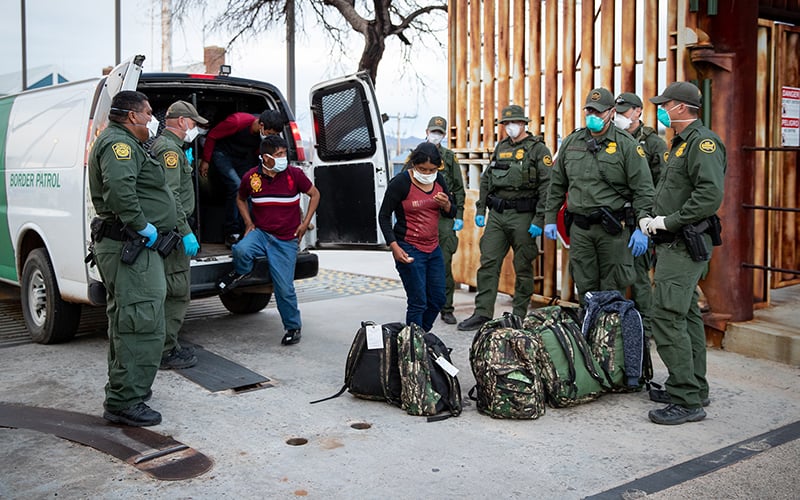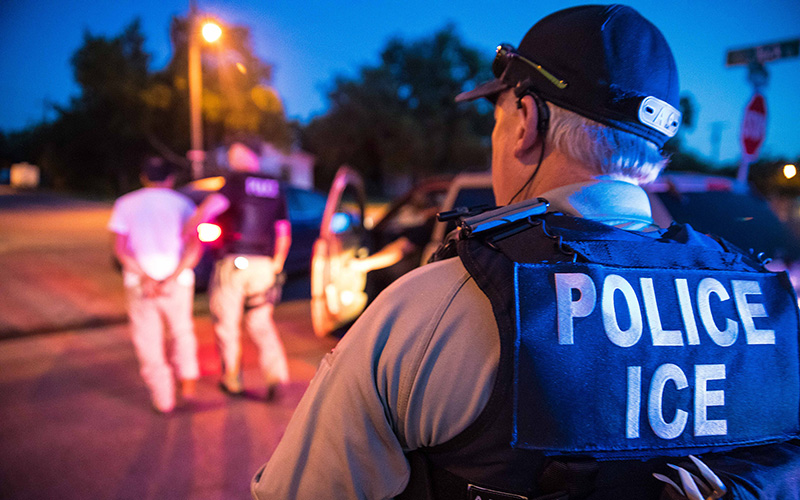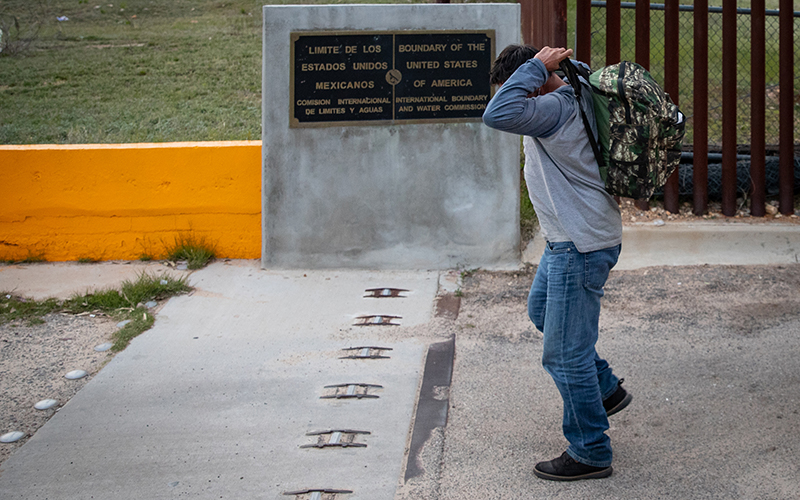WASHINGTON – The Biden administration will stop using the pandemic-era Title 42 policy to turn people away at the border effective May 23, as COVID-19 cases decline and officials insist they are prepared to handle a potential migrant surge.
More than 1.7 million migrants have been turned away since Title 42 was invoked in March 2020, with thousands still turned back every day. But administration officials, who have been under pressure to end the program, insisted they have a plan in place and are prepared to handle the likely surge in the number of people trying to cross the border.
“We have been planning for the eventual lifting of the CDC Title 42 order for many, many months,” said a Homeland Security official during background briefing for reporters Friday. “And have as a result of those planning efforts put together a comprehensive strategy to address a number of contingencies, including the potential for an increase in the number of border encounters.”
Reaction from Arizona lawmakers ranged from outright hostility to a cautious welcome from those who had called for an end to the Trump-era policy. But the optimism was tempered by concern that federal agencies are prepared to handle the fallout.
“We also need to have some serious conversations about our operations with processing migrants, capacity in providing shelter and evaluating asylum requests,” Rep. Ann Kirkpatrick, D-Tucson, said in an emailed statement. “This will be an overwhelming transition and we need to ensure the department is prepared for it.”
Other lawmakers said they do not believe the administration has that plan in place and that, while Title 42 needs to end, now is not the time.
“This is the wrong decision. It’s unacceptable to end Title 42 without a plan and coordination in place to ensure a secure, orderly and humane process at the border,” said Sen. Mark Kelly, whose comments were echoed by fellow Arizona Democratic Sen. Kyrsten Sinema.
A Homeland Security plan unveiled this week said the agency has budgeted $1 billion for “soft-sided facilities” to detain migrants, along with funding for transportation and medical facilities. DHS said it also has plans to shift agents to the border as needed, and it is working with the Justice Department to speed up processing of asylum claims and immigration cases.
Officials said they plan to aggressively prosecute human traffickers, and that the U.S. is coordinating with other countries to expedite repatriation of migrants who are turned away. Agencies are also working with state and local officials in the U.S., including nonprofits.
“We recognize the critical role that state and local government and NGOs play in the release and onward transportation of migrants,” a State Department official said during Friday’s briefing. “And we are committed to working closely with them.”
That could be particularly important in areas like Yuma, one of the “more remote parts of the border” where one official said DHS expects to continue to “anticipate challenges.”
“They will continue to be the more remote parts of the border, where we have not historically seen large migratory flows, places like Yuma and Del Rio where we have limited infrastructure and not as many personnel,” the official said. “Those are the areas where we are spending a great deal of time working on identifying additional resources that can help with this.”
Another element of the plan calls for vaccination of migrants who are apprehended. An official with the Centers for Disease Control and Prevention said the agency is already administering up to 2,000 COVID-19 vaccinations a day at 11 migrant processing sites, with plans to expand to 27 sites and as many as 6,000 shots a day.
It was the CDC that invoked Title 42 as a pandemic-prevention measure in March 2020, and it was the CDC this week that determined there is no longer a health need to keep migrants from entering the country. But it delayed the cutoff until May 23 in order to roll out the vaccination program.
Advocates say the Title 42 policy exposes migrants to unsanitary and unsafe conditions by turning them away, while doing little to prevent the spread of COVID-19. They hoped President Joe Biden would stop it when he took office in January 2021, but the policy has remained and the number of people turned away has gone up.
In the first two months of this year, more than 320,000 migrants were encountered at the southern border, and about 170,000 of them were turned away under Title 42, according to Customs and Border Protection data. Lawmakers and advocates worry that DHS will not be able to handle those numbers, much less the additional migrants who are expected to show up.
“This policy change will devastate the southern border and cause irrevocable harm to the security of the United States,” Rep. Paul Gosar, R-Prescott, said in an emailed statement. He cited estimates that border officials could soon be faced with “as many as 18,000 illegal immigrants per day.”
Until May 23, border officials will continue to enforce Title 42 as well as Title 8, the rule under which DHS can place migrants into removal proceedings until they are able to “establish a legal basis to remain in the United States.”
Advocates like Ronnate Asirwatham of the Network Lobby for Catholic Social Justice welcomed Friday’s announcement, but were dismayed by the decision to continue Title 42 until May. “For asylum seekers, delay means danger and death,” Asirwatham said in a prepared statement.
But Rep. Greg Stanton, D-Phoenix, said the delay will buy time for lawmakers and organizations to ramp up crucial resources to prepare for an expected surge at the border.
“The administration must demonstrate that it has a coordinated, comprehensive strategy to be ready for the near-certain rise in attempted crossings and guarantee a humane, efficient immigration process,” in those two months, he said in a statement.



